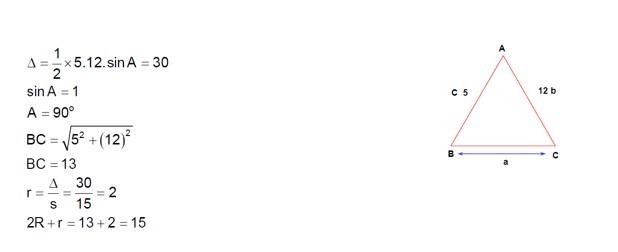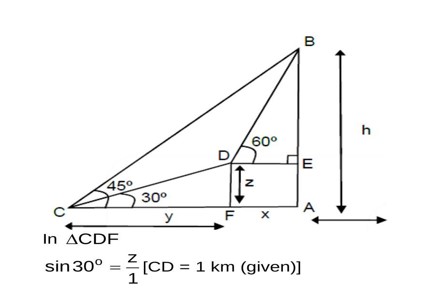Trigonometric Functions
Get insights from 128 questions on Trigonometric Functions, answered by students, alumni, and experts. You may also ask and answer any question you like about Trigonometric Functions
Follow Ask QuestionQuestions
Discussions
Active Users
Followers
New answer posted
2 months agoContributor-Level 10
Given the equation 15 sin? + 10 cos? = 6.
Divide by cos? : 15 tan? + 10 = 6 sec?
Using sec²? = 1 + tan²? , we get sec? = (1 + tan²? )² = 1 + 2tan²? + tan?
15 tan? + 10 = 6 (1 + 2tan²? + tan? ).
15 tan? + 10 = 6 + 12tan²? + 6tan?
9 tan? - 12 tan²? + 4 = 0.
This is a quadratic in tan²? : (3 tan²? - 2)² = 0.
? 3 tan²? = 2? tan²? = 2/3.
From this, we find sin²? and cos²? If tan²? = 2/3, then sin²? = 2/5 and cos²? = 3/5.
Also, sec²? = 1 + tan²? = 5/3 and cosec²? = 1 + cot²? = 1 + 3/2 = 5/2.
The expression to evaluate is 27 sec? + 8 cosec? = 27 (sec²? )³ + 8 (cosec²? )³.
= 27 (5/3)³ + 8 (5/2)³ = 27 (125/27) + 8 (125/8) =
New answer posted
2 months agoContributor-Level 10
Given the determinant:
| α β γ |
| β γ α | = 0
| γ α β |
The expansion of this determinant is - (α³ + β³ + γ³ - 3αβγ) = 0.
This implies (α+β+γ) (α²+β²+γ²-αβ-βγ-γα) = 0.
From a cubic equation x³ + ax² + bx + c = 0 with roots α, β, γ:
α+β+γ = -a
αβ+βγ+γα = b
αβγ = -c
Substituting into the determinant condition:
(-a) ( (α+β+γ)² - 3 (αβ+βγ+γα) ) = 0
(-a) ( (-a)² - 3b ) = 0
-a (a² - 3b) = 0
a (a² - 3b) = 0
This implies a=0 or a²=3b. If a≠0, then a²=3b, so a²/b = 3.
New answer posted
2 months agoContributor-Level 10
tan 30° = x/y ⇒ y = √3x
and tan 60° = (x+400)/y ⇒ √3y = x+400
= x + 400
Solving (i) and (ii), we get
2x = 400, x = 200
sin 30° = x/PC = 200/PC ⇒ PC = 400
New answer posted
2 months agoContributor-Level 10
Since AM of two positive quantities ≥ their G.M.
(2^sinx + 2^cosx)/2 ≥ √ (2^sinx * 2^cosx)
= √ (2^ (sinx+cosx)
= √2^ (√2cos (x-π/4)
≥ √2^ (-√2) ⇒ 2^sinx + 2^cosx ≥ 2 · 2^ (-1/√2) = 2^ (1-1/√2)
Taking an Exam? Selecting a College?
Get authentic answers from experts, students and alumni that you won't find anywhere else
Sign Up on ShikshaOn Shiksha, get access to
- 65k Colleges
- 1.2k Exams
- 679k Reviews
- 1800k Answers


